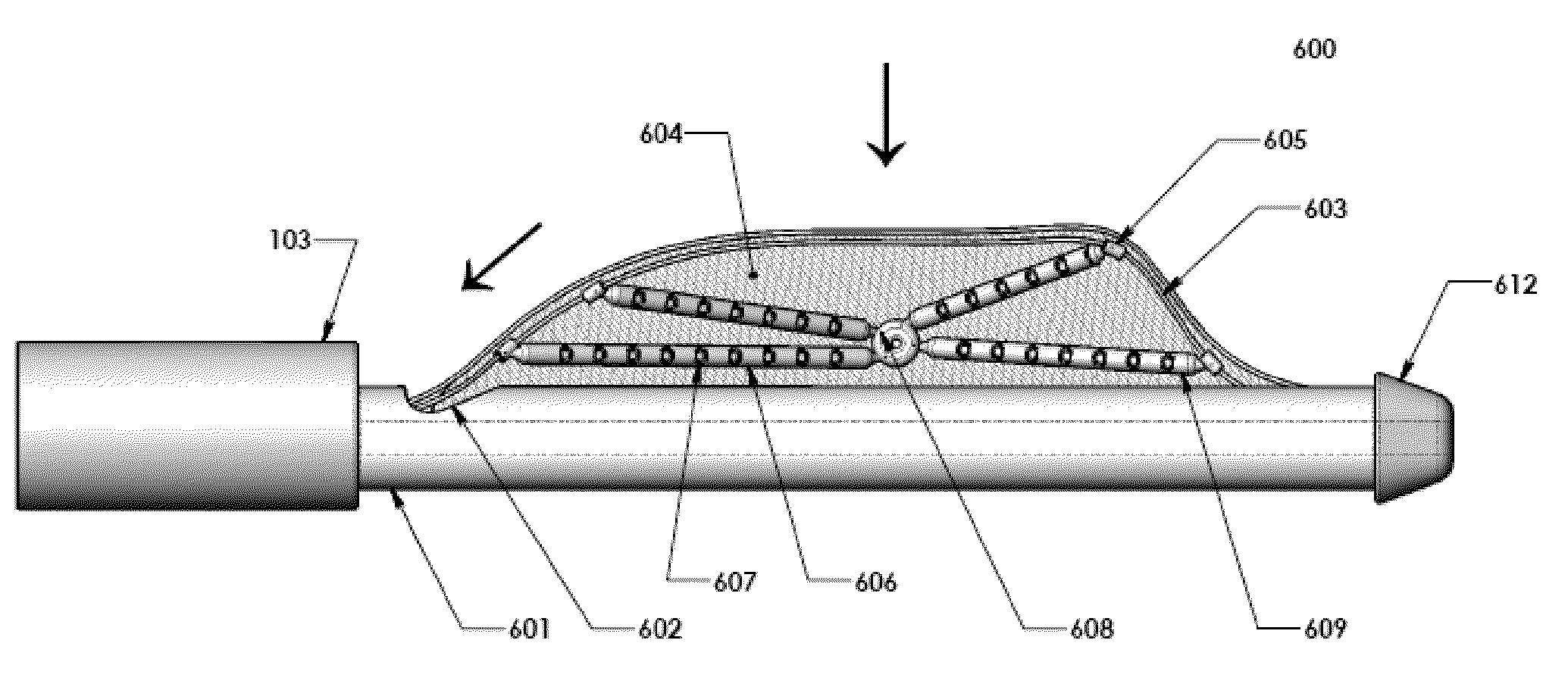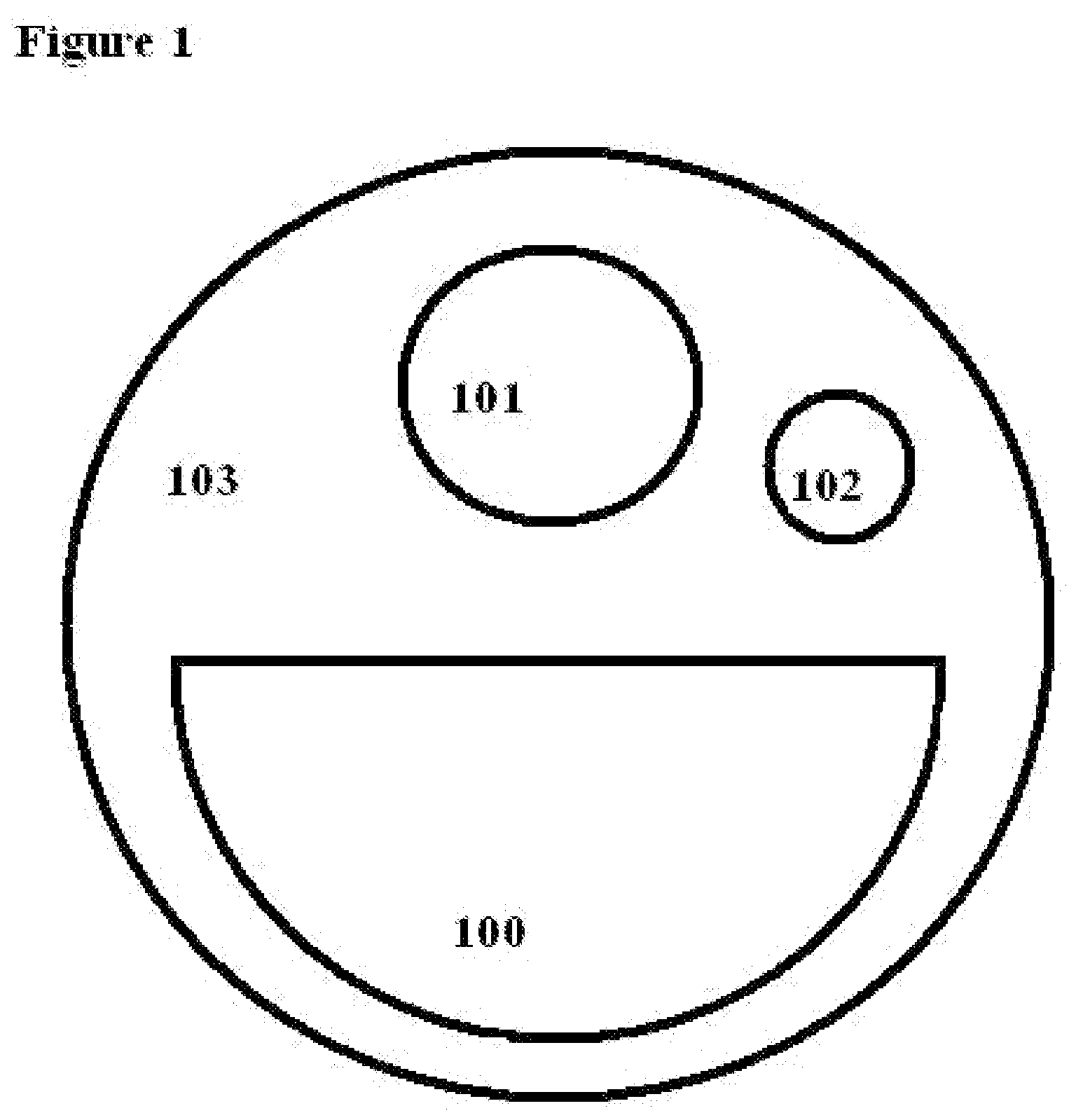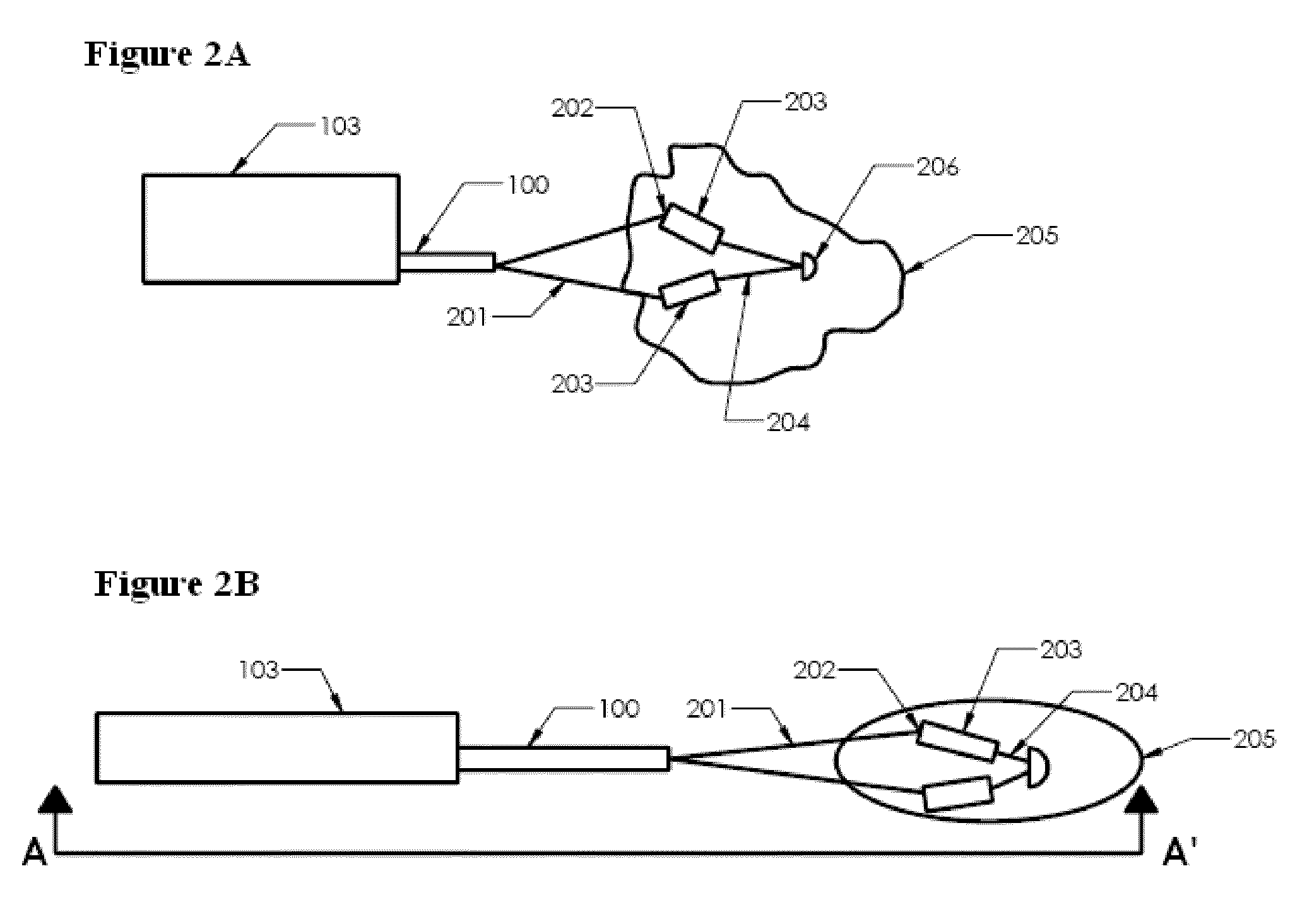Endoscopic system for lung biopsy and biopsy method of insufflating gas to collapse a lung
a biopsy system and lung technology, applied in the field of endoscopic biopsy system, can solve the problems of difficult control, difficult to move sharp, scattered barbs, and take a long time to collect superficial layers of tissue from a large surface area, and achieve the effect of a shorter period and a larger surface area
- Summary
- Abstract
- Description
- Claims
- Application Information
AI Technical Summary
Benefits of technology
Problems solved by technology
Method used
Image
Examples
Embodiment Construction
[0049]First, a general procedure for the collection of biopsy samples from a lung according to the systems and methods of this invention will be outlined. Second, various embodiments of the endoscopic biopsy system and various methods for their use will be described in detail with reference to the several drawings. Although the systems and methods of this invention are illustrated with respect to collecting biopsy samples from a lung, the systems and methods are not limited to lung biopsy. One having ordinary skill in the art will recognize that the systems and methods described herein are readily adapted for the collection of biopsy samples from several regions of the body.
General Procedure
[0050]Step One: Consent, Anesthesia, Medical Staff, and Set-Up
[0051]Prior to beginning the procedure, the informed consent of the patient should be obtained.
[0052]One advantage of the present invention, as compared to traditional open-surgery biopsy techniques, is that it is done under local anes...
PUM
 Login to View More
Login to View More Abstract
Description
Claims
Application Information
 Login to View More
Login to View More - R&D
- Intellectual Property
- Life Sciences
- Materials
- Tech Scout
- Unparalleled Data Quality
- Higher Quality Content
- 60% Fewer Hallucinations
Browse by: Latest US Patents, China's latest patents, Technical Efficacy Thesaurus, Application Domain, Technology Topic, Popular Technical Reports.
© 2025 PatSnap. All rights reserved.Legal|Privacy policy|Modern Slavery Act Transparency Statement|Sitemap|About US| Contact US: help@patsnap.com



